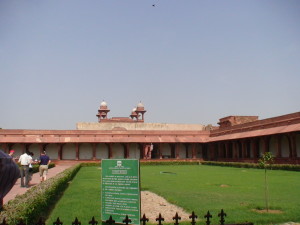Vidur Bharatram is a new contributor for Never Daunted Radio Network. His specialty is cannabis and his POV on the matter is pretty awe-inspiring. Don’t just take it from me, read his first post about how he fell in love with the power of the plant. – Chloe

My friend and I are in the rickshaw just before smoking with priests
A journey of mythology, medicine, and religion began two thousand years ago for Cannabis Sativa. Its mystical ways of intoxicating, soothing and healing the mind captured the imagination of the Indian Subcontinent. Written in the Vedas, the religious Hindu book, cannabis is described as a herb of healing. Its religious usage connected with the worship of Lord Shiva, who according to Indian mythology killed his son in a fit of rage after making love to his wife. In his rage, Lord Shiva cut off the boy’s head and fled from home.
In his quest to find salvation and rid himself of his thunderous anger he discovered a tree to sit under and meditate. To guide him through this meditative, soul-searching journey, Lord Shiva found a distinctly unique looking plant, a herb that stood near the tree. Lord Shiva collected the buds and leaves and ingested the contents. After he ate the leaves his mind floated into a haze of intoxication, meditation, and relaxation. This ignited Lord Shiva’s curiosity of this herb, which he spoke highly about to his followers, family and other deities. The wandering journeymen or Sadhu’s (Indian Priestly figures) wandered around India preaching about the spiritual and meditative qualities. This mind warping mild hallucinogenic weed is indigenous to the Northern regions of India,
The wandering journeymen or Sadhu’s (Indian Priestly figures) wandered around India preaching about the spiritual and meditative qualities. This mind-warping, mild hallucinogenic weed is indigenous to the Northern regions of India, Pakistan and Afghanistan. Along the Hindu Kush mountain range between Pakistan and Afghanistan, Shiva was said to have used the plant for many reasons, which included meditation and found eternal salvation. Thus, began the tale and journey of cannabis in In modernity, India’s laws and narcotics governance in India.
In modernity, India’s laws and narcotics governance are based on the 1961 Geneva Convention codes that forced the country to change its views and stance on the cannabis plant. Used for holy and religious festivals from every member of society, the government struggled to impose, or if it did sporadically, the new laws of narcotics. The use of marijuana in India is based mainly on religion and ceremonial use. However, with the population increasing and the youth dominating the diaspora of society, there is a major increase in recreational use.

The Taj Mahal on that fateful day
India is known for its harsh summer climates and cool winter months. The foothills of the Himalaya’s provide the cannabis plant with optimal growing conditions. The American and Dutch cultures of smoking, paraphernalia, and colorful posters impacted how positively the youth perceive marijuana.
On a personal level, I have used cannabis in my country of India, countless times. Unlike in the United States, in India we consume the resin or hash of the plant. In the foothills, this is the only region in the world where growers/farmers use a live plant to create hash or Charas.

Inside the grounds of the TajMahal
The process is simple but tedious, the Charas/Hash is removed after the resin on the live plants are rubbed on farmers hands for hours until a black sticky resinous substance is left behind. After drying the substance out under the sun, the farmers collect the hardened resin and create one tola. A tola is immediately 10 grams and usually tola’s, depending on the plant quality and strain, go between 30-80 dollars.
I recall my first time when I smoked out of an Indian hand pipe called a chillum. I was summoned by a small group of Hindu priests, who small sheet converted into a tent where they sat crossed legged.
They offered the Chillum, which is cylindrical handmade clay smoking device, which is created in India and usually used by Sadhu’s who smoke and worship Shiva. I sat down and they passed me the Chillum. I puffed, puffed and puffed until I was able to take a long inhalation of hash tasting thick smoke. The feeling of calm, relaxation and joy seeped into my mind. The sun shone bright, my sunglasses hung off my nose and the heat was piercing my skin but my mind was clear, concentrated and relaxed. The priests got up and told me they were on the move to find another resting place. They wished my luck and sent some blessings along with me and I continued on my journey to see the wonder.
Vidur Bharatram is a contributor for NDRN Green. He writes about cannabis from a spiritual, holistic, and worldly view.
